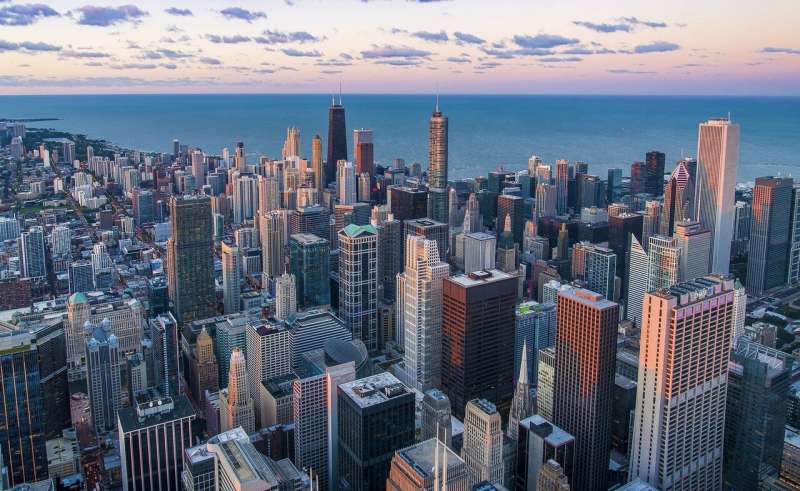Trump EPA overhaul of lead pipe regulations allows toxic plumbing to stay in the ground in Chicago, other cities

Chicago has more lead water pipes than any other American city, yet federal regulations unveiled this week by the Trump administration likely won't require anything new to prevent homeowners and renters from ingesting the brain-damaging metal.
Physicians and scientists say that unless water drawn from household faucets is properly filtered, the only way to keep the lead out in older cities like Chicago is by replacing pipes connecting homes and small apartment buildings to municipal water supplies.
Trump appointees rejected the expert advice, choosing instead to tinker with regulations adopted three decades ago that are widely seen as inadequate.
Andrew Wheeler, the U.S. Environmental Protection Agency administrator, called the changes a dramatic improvement of what is known as the Lead and Copper Rule. But the fine print of the new regulations show the Trump EPA effectively delayed lead pipe replacements for up to three decades and, in some cases, allowed cities to keep toxic pipes in the ground indefinitely.
"They nibbled around the edges but did not fundamentally fix the problem," said Erik Olson, an attorney with the nonprofit Natural Resources Defense Council who unsuccessfully sued for changes in federal regulations during the 1990s. "That's really disappointing and amounts to a missed opportunity."
Ingesting tiny concentrations of lead can permanently damage the developing brains of children and contribute to heart disease, kidney failure and other health problems later in life. In 2018, researchers estimated more than 400,000 deaths a year in the U.S. are linked to lead exposure.
Both the EPA and the Centers for Disease Control and Prevention concluded years ago there is no safe level of exposure to lead. More recently, EPA scientists and academic researchers have discovered the toxic metal can leach into drinking water if faucets haven't been used for a few hours or if service lines have been jostled by street work.
The new regulations deprive the EPA of a bigger stick to force Chicago and other cities to begin tackling the lingering threat to public health, which became the subject of national attention after high levels of lead began flowing out of household taps in Flint, Michigan.
Flint highlighted the disastrous consequences of failing to properly maintain a public water system. Chicago is the top example of a broader problem facing scores of U.S. cities that spent more than a century installing lead pipes to deliver drinking water.
Until Mayor Lori Lightfoot took office, Chicago leaders denied they had a problem, even though the city required new homes to be hooked up to lead service lines until the day Congress banned them in 1986.
In September, Lightfoot aides announced the city would begin replacing toxic pipes next year. Initial work will be modest compared with the scope of the dangers; only 750 of the roughly 400,000 lead service lines connecting homes to street mains are expected to be dug up in 2021, according to slides prepared by the Chicago Department of Water Management.
There still is no federal standard for the amount of lead allowable in tap water from individual homes. Even under the Trump EPA regulations, utilities are considered to be in compliance as long as 90% of the homes tested have lead levels below 15 parts per billion, a standard that isn't based on scientific evidence of dangers posed by the toxic metal.
The new rules add another threshold that requires utilities to begin drafting plans for service line replacements if lead levels in 90 per of homes sampled exceed 10 ppb. Utilities also will be required to provide results more promptly to homes that exceed the EPA's new "trigger level."
Wheeler said the revamped rule, which has been in the works since 2010, "uses science and best practices to correct shortcomings of the previous rule."
"This historic action strengthens every aspect of the Lead and Copper Rule and will help accelerate reductions of lead in drinking water and better protect our children and communities," Wheeler said during an online news conference.
The American Academy of Pediatrics has documented lasting cognition problems in children exposed to lead concentrations of just 5 ppb.
Another shortcoming of the Trump rules: The administration retained the previous requirement that only 50 samples need to be collected every three years in Chicago and other big cities. The Tribune reported in 2016 that most of the homes sampled in Chicago are owned by water department employees or retirees living on the Far Northwest and Far Southwest sides, where cases of lead poisoning are rare.
Only two of the federally required samples drawn in Chicago during 2018 exceeded the Trump EPA's new threshold of 10 ppb, according to state records.
By contrast, results from the city's free testing kits show nearly 1,300 homes across Chicago had lead levels exceeding 10 ppb last year. Lead-contaminated water has been found in at least one home in all 77 community areas since the water department began offering the testing kits in 2016.
©2020 the Chicago Tribune
Distributed by Tribune Content Agency, LLC.


















